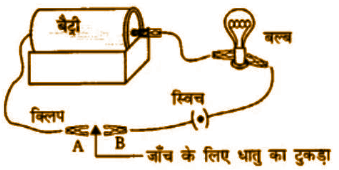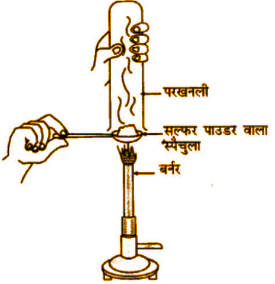Step-by-Step Solutions For Class 10 Science Chapter 3 In Hindi - Free PDF Download
NCERT Solutions For Class 10 Science in Hindi Chapter 3 Metals And Non-Metals (2025-26)
FAQs on NCERT Solutions For Class 10 Science in Hindi Chapter 3 Metals And Non-Metals (2025-26)
1. Explain the meanings of malleable and ductile.
Malleability of an object means whether or not it can be deformed or shaped under compressive stress, by the literal sense of the word ‘malleable’, by hammering. Whereas, a ductile solid is one that can be drawn into thin wire using tension stress. These are two famous properties of metals as discussed in Chapter 3 in Class 10th Science. The other properties of metals and more are covered in detail in NCERT Solutions for the same.
2. Why is sodium kept immersed in kerosene oil?
Sodium is highly reactive in nature. When exposed to the air, it reacts violently with the moisture, oxygen, and carbon dioxide present in the air to form sodium hydroxide and hydrogen. The robust reaction can even lead to a fire. Though, sodium does not react with kerosene oil which is why it is immersed in the oil to avoid the explosive reaction. Also, exposure to air leads to a change in the colour of the substance.
3. List out the differences between metals and nonmetals based on their physical properties in Chapter 3 of NCERT Solutions for Class 10 Science.
Physical properties of metals include malleability, ductility, good conductors of heat and electricity, lustrous, and sonorous. Whereas the nonmetals do not have any of those physical properties. There are a few exceptions to these properties like mercury, zinc (malleability), aluminium (conductivity), and sodium which is a non-lustrous metal. You can learn physical properties and more about metals and non-metals with the help of the NCERT Solutions for Class 10th Science Chapter 3 available on the Vedantu website and the app.
4. Mention the uses of metals and non metals explained in Chapter 3 of NCERT Solutions for Class 10 Science.
Metals and nonmetals are both used in our daily lives in different forms. We see metal ornaments, vessels, etc. Non metals are used as fuel, in the manufacturing of various fertilizers, and so on. You can get a list of uses of metals and nonmetals in NCERT Solutions for Chapter3: Metals and Nonmetals in Class 10th Science at Vedantu. These solutions delve into the properties, uses and extraction of both elements.
5. How can I download NCERT Solutions for Class 10 Science Chapter 3 in Hindi?
At Vedantu, you can find chapter-wise NCERT Solutions for Class 10 Science in Hindi. Visit the link for NCERT Solutions for Chapter 3: Metals and Nonmetals PDF to download the NCERT Solutions for free. These solutions are created by subject experts following the CBSE guidelines. Therefore, they are exceptionally reliable with accurate information and answers. The solutions are useful for comprehensive learning of each subject and the best aid to prepare for exams and they make revision easy.




















 Watch Video
Watch Video






















